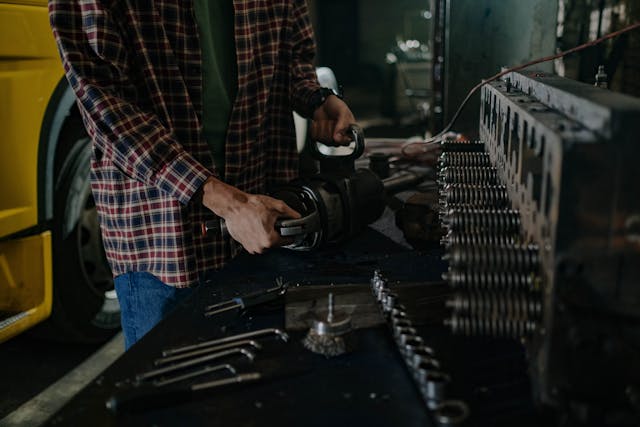In the automotive world, there are four basic categories of engines. Gas and diesel are the longest running options, and more recently, hybrids and electric versions have entered the mix. Gas-burning engines were the first to be developed with diesels coming into play about a decade later. Gas engines continue to dominate the market with an estimated 90 percent of vehicles in America being equipped with them.

That being said, diesel engines certainly have their strong suits. Though they’re not the most common, they can offer a range of benefits. They’re more fuel efficient, and they can hold up to more abuse than their standard gas-burning counterparts. They last far longer as well. On top of that, they have more torque and power, which makes them particularly important in heavy-duty vehicles like tractors, buses, and construction equipment. They’re among the most essential semi truck parts as well.
How Diesel Engines Work
Now, let’s delve into just how diesel engines work. They’re a type of internal combustion engine, meaning they ignite a mixture of fuel and oxygen in a closed space. The resulting pressure is then converted to energy. Diesel engines work a bit differently than gas engines, though. That, in turn, gives them their added power, efficiency, and longevity.
All internal combustion engines require heat and pressure to ignite fuel and create power. In gas engines, that heat comes from spark plugs. In contrast, diesel engines have glow plugs. Each cylinder in the engine has its own glow plug that heats it up. That provides the initial heat needed to start the internal combustion process. That being said, some newer diesel engines don’t rely on those glow plugs quite as much as the older ones did.
Once the cylinders are warmed up, if they need to be, air is drawn into the cylinders. Then, the pistons in the cylinders push upward. That compresses the air, causing it to heat up even more. From there, a fine mist of diesel fuel is sprayed into the cylinders via fuel injectors. When the fuel and hot compressed air mix, they combust. That forces the pistons down and turns the engine’s crankshaft.
Following the little explosions that move the pistons and turn the crankshaft, spent air filled with byproducts of the combustion process is sent out through the vehicle’s exhaust. Fresh new air is pulled into the cylinders, pressurized, mixed with fuel, and so on. It’s an ongoing process that keeps the engine running.
Beyond the Basics
As mentioned, diesel engines tend to be more efficient than gasoline engines. Because of the way they work, they have a higher compression ratio, and they can get more energy out of the fuel they burn. That’s also among the reasons they’re more powerful. It’s partially responsible for their lower maintenance needs too.
Diesel engines are typically heavier than those that burn gas. They’re also more complicated. Because of that, they tend to be more expensive to build. Though they can also be more expensive to maintain, they generally require less maintenance, so the costs of ownership balance out in the long run.
All Things Considered
Diesel engines aren’t as common as gas engines, but they’re more efficient, and they offer more power and torque. They can pull heavy loads that gas engines would never be able to handle. They can run for far more miles while needing less maintenance as well. They’re perfect for heavy-duty needs, and they’re built for the long haul.



